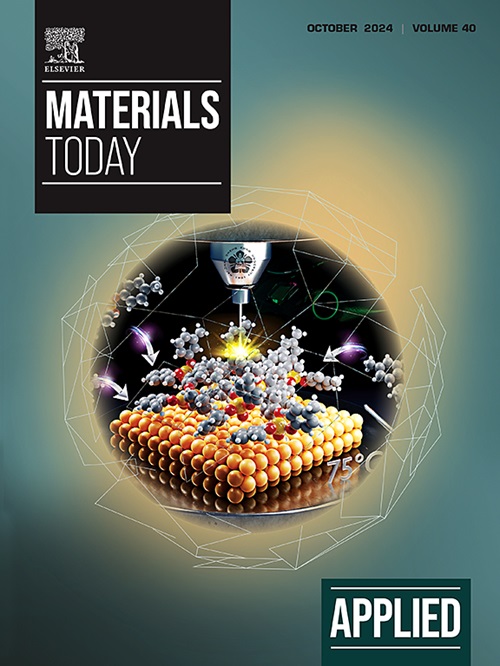通过丝状三维打印技术实现脂质口服剂型的个性化定制
IF 6.9
2区 材料科学
Q1 MATERIALS SCIENCE, MULTIDISCIPLINARY
引用次数: 0
摘要
虽然基于长丝的三维打印(3DP)技术是制药领域应用最多的 3DP 技术,但它尚未被证明可用于加工药物脂质制剂。本研究利用棕榈酸六甘油酯(Pg6-C16-P)作为一种先进的脂质材料,载入非洛地平作为一种溶解性较差的模型药物,通过丝基三维打印技术制造新型口服固体制剂(OSDF)。材料熔融混合后,采用液体喂料法挤出配方,以获得机械可控的、可进行三维打印的载药脂质长丝。实验证明,可制造出具有不同填充密度的几何形状。研究发现,填充密度的大小对实现所需形状所需的最佳打印参数有重大影响。固态分析证实了 3DP 后非洛地平的无定形状态。通过溶解试验研究了药物的释放率,结果表明根据片剂的几何形状可以调整释放率。此外,还可以对剂型进行定制设计,使其性能与商业产品相似。该制剂通过毒性研究证明是安全的,非洛地平的溶解度也有所提高。这项研究将基于长丝的 3DP 确立为制造先进的脂质 OSDF 的替代平台,同时将 Pg6-C16-P 作为一种有前途的高性能 3DP 给药脂质材料加以推广。本文章由计算机程序翻译,如有差异,请以英文原文为准。
Personalization of lipid-based oral dosage forms via filament-based 3D-printing
While filament-based 3D-printing (3DP) is the most utilized 3DP technology in the pharmaceutical field, it has not been demonstrated for processing of drug-loaded lipid-based formulations. This work exploits hexa-glycerol ester of palmitic acid (Pg6-C16-P) as an advanced lipid material, loaded with felodipine as a poorly soluble model drug, for fabricating novel oral solid dosage forms (OSDFs) via filament-based 3D-printing. After material melt-blending, the formulation was extruded using the liquid feeding approach to obtain a mechanically manageable, and hence 3D-printable, drug-loaded lipid filament. The fabrication of geometries with variable infill densities was demonstrated. The extent of infill density was found to significantly impact the optimal printing parameters required to achieve the desired shape. The solid-state analysis confirmed the amorphous state of felodipine after 3DP. The release rate of the drug was studied via dissolution test and showed to be tunable based on the tablet geometry. It was also possible to tailor the design of the dosage form to perform similarly to a commercial product. The formulation was evidenced as safe via toxicity studies with improved felodipine solubility. This study establishes filament-based 3DP as an alternative platform viable for fabricating advanced lipid-based OSDFs, and concurrently, promotes Pg6-C16-P as a promising and high performing 3DP lipid material for drug delivery.
求助全文
通过发布文献求助,成功后即可免费获取论文全文。
去求助
来源期刊

Applied Materials Today
Materials Science-General Materials Science
CiteScore
14.90
自引率
3.60%
发文量
393
审稿时长
26 days
期刊介绍:
Journal Name: Applied Materials Today
Focus:
Multi-disciplinary, rapid-publication journal
Focused on cutting-edge applications of novel materials
Overview:
New materials discoveries have led to exciting fundamental breakthroughs.
Materials research is now moving towards the translation of these scientific properties and principles.
 求助内容:
求助内容: 应助结果提醒方式:
应助结果提醒方式:


